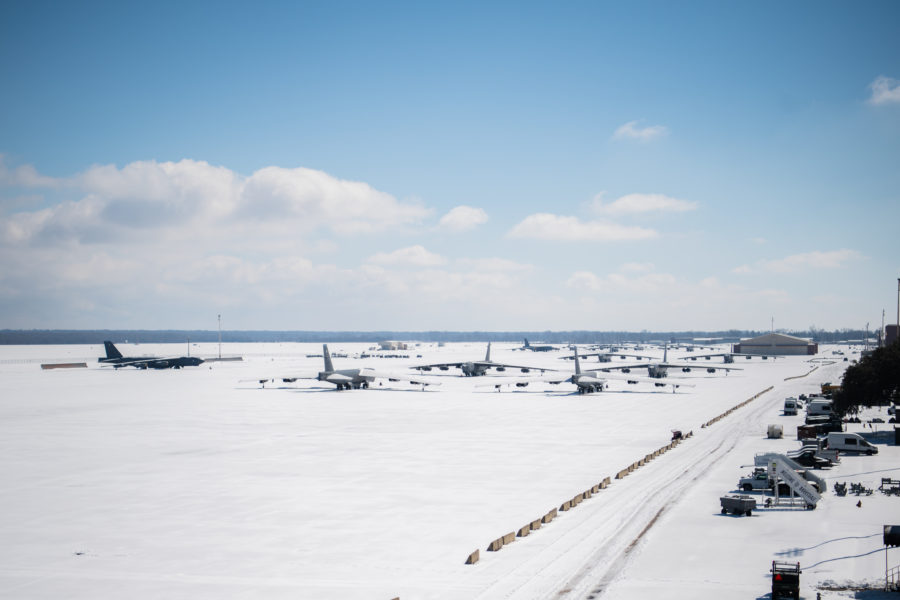Winter storms caused more than $4 million in damage to Air Force Global Strike Command bases, with 28 total Air Force installations impacted by the weather earlier this year.
The storms contributed to large-scale damage at multiple installations across the south in February, while heavy snow impacted operations at several bases. The storms come as the Air Force is assessing how it can better prepare its bases for extreme weather, through installation energy plans or resilience exercises.
“We’re continuing to assess damage and are committed to restoring facilities to full mission capability,” said Brig. Gen. John J. Allen Jr., commander of the Air Force Civil Engineer Center, during a March 26 House Armed Services readiness subcommittee hearing.
AFGSC in an April 6 news release outlined the damage that several of its bases received during the winter storm: F.E. Warren Air Force Base, Wyo.; Malmstrom Air Force Base, Mont.; Ellsworth Air Force Base, S.D.; Whiteman Air Force Base, Mo.; Minot Air Force Base, N.D.; Dyess Air Force Base, Texas; Barksdale Air Force Base, La.; and Kirtland Air Force Base, N.M., took damage estimated from $20,000 to more than $1 million. The command estimates total damage to be more than $4 million.
Dyess was hardest hit, with more than $1.4 million in damage. AFGSC said installations in places such as Texas and Louisiana are not designed for temperatures that fall below zero, and suffered from burst pipes and other problems causing several issues, including loss of drinkable water. In response, civil engineers from six other Air Force bases came to Dyess to help by replacing drywall, fixing plumbing and heating, and repairing ventilation and air conditioning units, according to the release.
At northern missile bases such as F.E. Warren, heavy snow was the culprit. A March storm dropped more than 36 inches of snow, which impacted operations even though the installation is no stranger to heavy snow.
“AFGSC successfully withstood many challenges in the past year, and this storm is no different,” said Chief Master Sgt. Charles R. Hoffman, AFGSC’s command chief master sergeant, in the release. “Our Striker Airmen are resilient and remain ready. As with all challenges, during the storm they took care of the mission and each other. As we go forward, we will look at lessons learned and better prepare ourselves for the future.”
Allen, in testimony to the House panel, said recent storms such as these, along with the hurricane that caused immense destruction at Tyndall Air Force Base, Fla., in 2018 and heavy flooding at Offutt Air Force Base, Neb., in 2019 showed that the Air Force needs to better prepare for threats from climate change as well as from potential adversaries.
“We must continually learn from these events and adapt to meet current and future threats to our installations posed by severe weather and climate, as well as physical or cyber-attacks,” he said.
